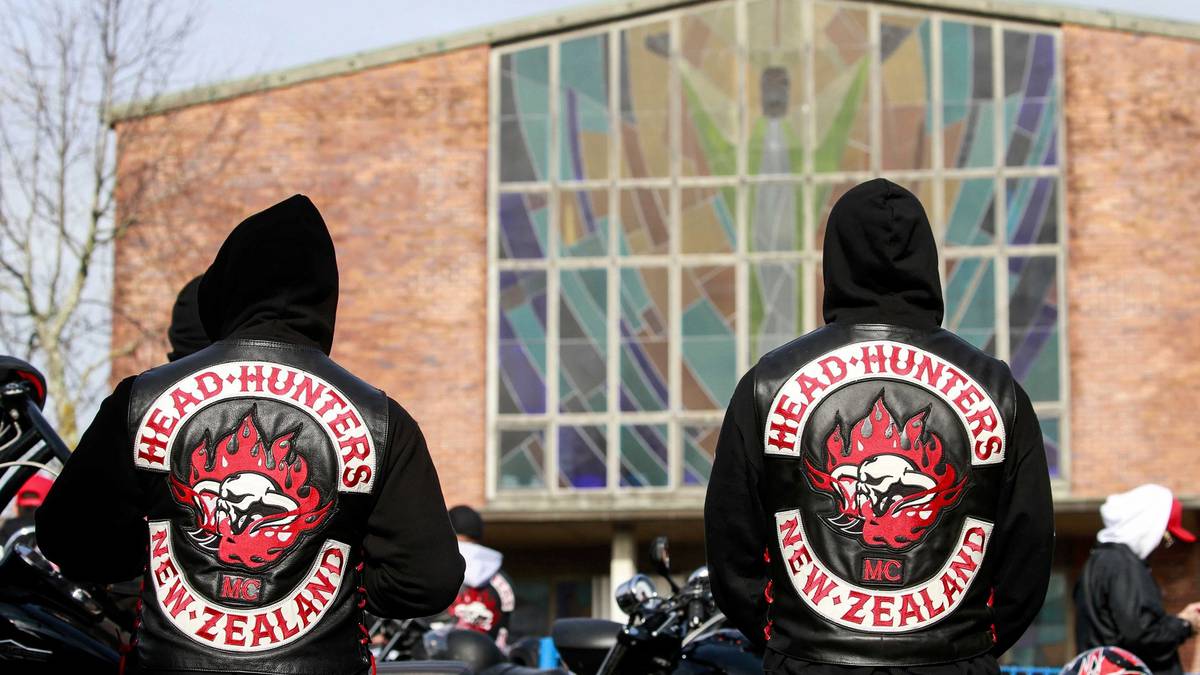The police’s efforts to communicate with gangs will become more coordinated in preparation for the enforcement of controversial Government policies limiting gang insignia and gatherings.
The Government is progressing proposed changes to how gangs are policied, including making it illegal to wear a gang patch in public, requiring gang members to immediately leave an area through dispersal notices and enabling courts to issue non-consorting orders to prevent specific gang members from communicating with each other for up to three years.
How police will enforce these measures is yet to be determined given the legislation is only just reaching Parliament. Coster has previously said enforcement of the patch ban could take different forms including stopping a patch-wearing gang member on the street, but could also involve officers seeing patches being publicly worn and following up later.
However, Police Commissioner Andrew Coster says the new policies mean police will look to coordinate how officers liaise with gangs so a more consistent approach is in place by the time the measures become law.
“We will be looking not just at liaison officers but also the different groups that we have that interface with gangs across the country and how we best position for the new legislation,” he told the Herald.
Coster explained that gang liaison officers and other staff within police had a longstanding role communicating with gangs, which allowed police to set expectations, to understand gangs’ intentions and to help manage events like gang tangi or funerals.
He said there was a range of models across the country but police would look to build a more consistent approach before the legislation was passed.
Police couldn’t easily identify how many staff it had working in gang liaison roles. Coster wasn’t aware whether more funding would be required to make the necessary changes.
He also wouldn’t offer a view on whether the new policies would lead to a breakdown of relationships between his staff and gangs.
“I think it’s difficult to predict the full impact of the change.
“Obviously, this legislation will have quite a significant impact on gangs and there’ll be a period of adjustment as that new law beds in, but at the end, of the day, it’s police doing our job to enforce the law.
“Generally speaking, the gangs have understood that that’s our role and, nothing really changes there.”
/cloudfront-ap-southeast-2.images.arcpublishing.com/nzme/VXDBOUHJBND3THYERCDE5YVSSM.jpg)
In a recent select committee appearance, Coster was asked whether the ban would lead to more police assaults, to which he accepted the general logic that with more gang engagement came a higher risk of assault.
Also at a select committee this week, Justice Minister Paul Goldsmith said it would be a challenge to enforce the ban but said that shouldn’t be a reason not to do it.
Police Minister Mark Mitchell said in a statement that police decisions concerning gang liaison were operational and didn’t comment further.
Labour police spokeswoman Ginny Andersen said gang liaison staff played an important role minimising public disruption and feared police would struggle to implement the ban.
She pointed to areas in New Zealand with low police resources and high numbers of gang members, saying it wouldn’t be possible to apply the ban evenly across the country.
The ban was similar to measures that were applied in Western Australia. Government ministers and MPs have pointed to how the ban in Western Australia led to gang members fleeing the state as evidence of the ban’s effectiveness.
Andersen predicted gang members here would simply flock to areas with low police resources to escape the consequences of the ban.
Adam Pearse is a political reporter in the NZ Herald Press Gallery team, based at Parliament. He has worked for NZME since 2018, covering sport and health for the Northern Advocate in Whangārei before moving to the NZ Herald in Auckland, covering Covid-19 and crime.




 Newshub closure: Freelancers, contractors also set to lose jobs but weren’t in ‘all-staff’ meeting
Newshub closure: Freelancers, contractors also set to lose jobs but weren’t in ‘all-staff’ meeting